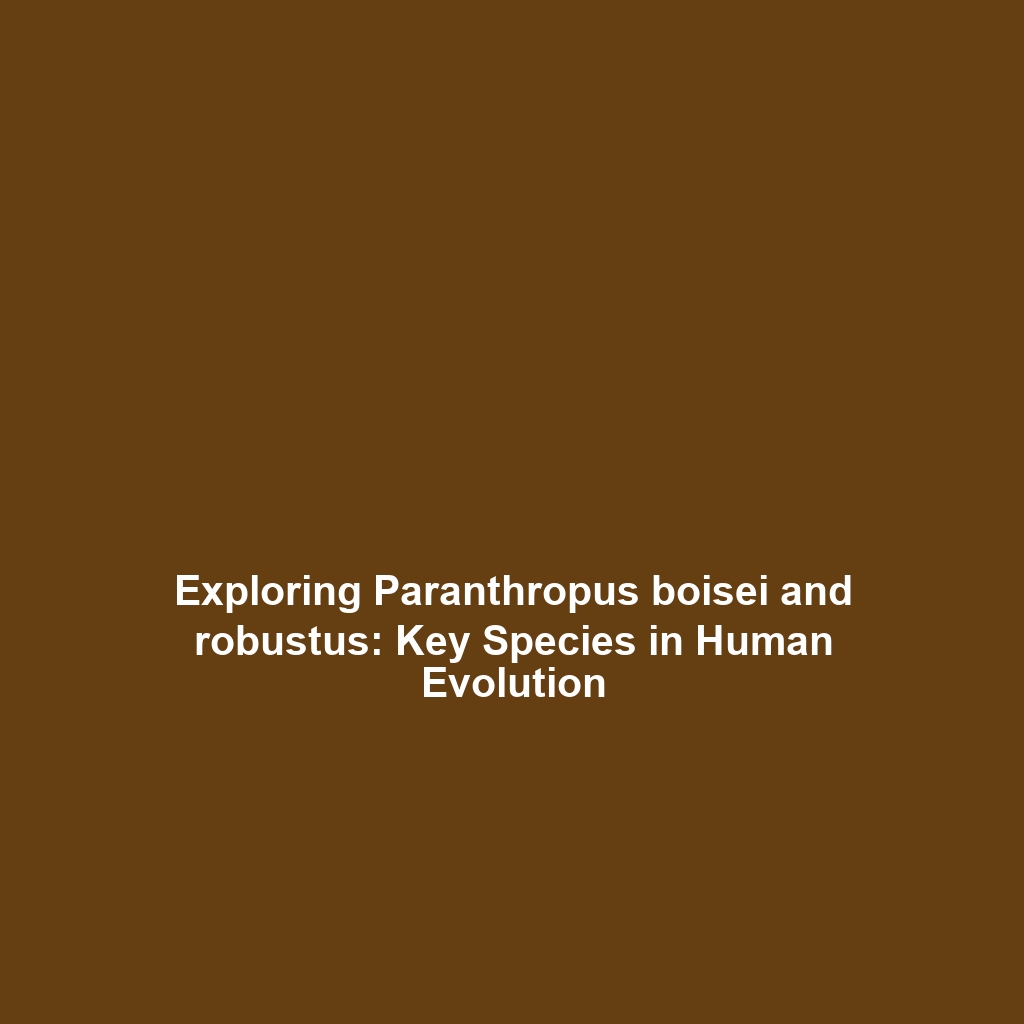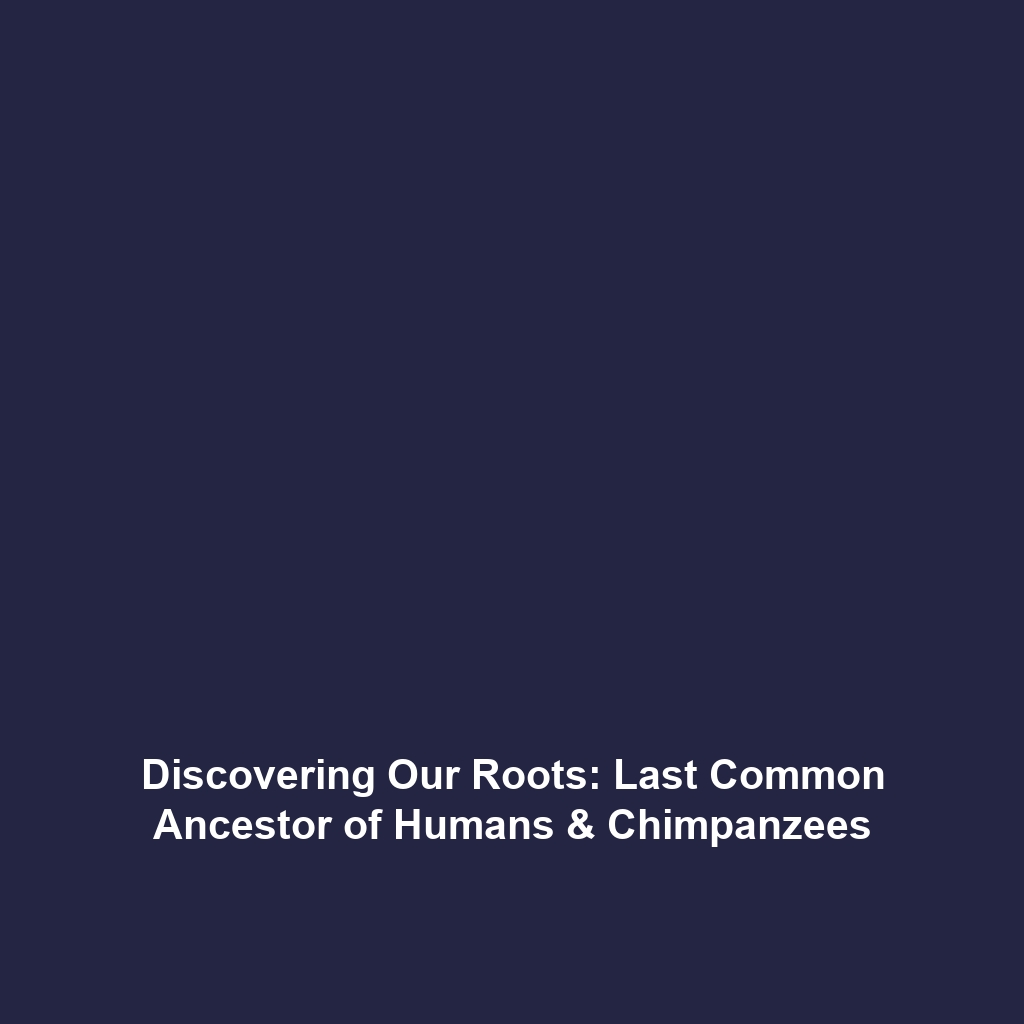Species: Paranthropus boisei and Paranthropus robustus – Insights into Human Evolution
Introduction
The study of Paranthropus boisei and Paranthropus robustus is pivotal in understanding the rich tapestry of human evolution. These hominin species showcase unique adaptations and characteristics that shed light on the dietary and environmental factors that influenced early humans. Dating back to approximately 2.3 to 1.2 million years ago, Paranthropus species played a crucial role in our ancestral lineage, particularly in the evolution of cranial and dental traits suited for particular survival strategies. Understanding these species not only enhances our knowledge of human evolutionary biology but also positions them as key figures in the study of early hominin diversity.
Key Concepts
Defining Characteristics
Paranthropus boisei and Paranthropus robustus are recognized for their distinctive physical traits, which include:
- Cranial Traits: Both species exhibit pronounced cranial features such as robust mandibles and large dental arches, adapted for processing tough vegetation.
- Dietary Adaptations: The strong, flat molars of both species indicate a specialized diet focused on hard and fibrous plant material.
- Geographical Distribution: Fossil evidence suggests that these species inhabited diverse environments across eastern and southern Africa.
Evolutionary Significance
These species help illustrate the various evolutionary pathways hominins have taken, emphasizing the adaptive responses to changing climates and ecosystems in the context of human evolution.
Applications and Real-World Uses
The study of Paranthropus boisei and Paranthropus robustus has significant real-world applications, particularly in fields such as:
- Paleoanthropology: Understanding how ancient species adapted to their environments can influence contemporary conservation efforts of primate habitats.
- Anthropology: Insights from these species contribute to our understanding of human behavior, social structures, and evolutionary psychology.
- Education: The research surrounding these hominins serves as an educational platform for teaching the principles of evolutionary biology and anthropology to students.
Current Challenges
Despite the wealth of knowledge available, studying Paranthropus boisei and Paranthropus robustus presents several challenges:
- Incomplete Fossil Records: Fossils are often fragmentary, limiting the scope of anatomical and behavioral understanding.
- Debate on Taxonomy: There exists ongoing discussion among scientists about the classification and relationship of Paranthropus species to other hominins.
- Environmental Context: Difficulty in accurately reconstructing the environmental conditions these species lived in complicates ecological interpretations.
Future Research and Innovations
Ongoing research into Paranthropus boisei and Paranthropus robustus is expected to yield groundbreaking insights, including:
- Advanced Dating Techniques: Innovations in dating methods may provide more accurate timelines for fossil findings.
- Genetic Studies: Future genomics research could uncover genetic links between these species and modern humans, enhancing our understanding of evolutionary traits.
- 3D Reconstruction: Technological advancements in 3D modeling will help visualize anatomical features more precisely, aiding in comparative studies.
Conclusion
In conclusion, the significance of Paranthropus boisei and Paranthropus robustus in the scope of human evolution cannot be overstated. They provide critical insights into our evolutionary history, highlighting the diverse adaptations that shaped early hominins. As research progresses, it is crucial to continue exploring these remarkable species to appreciate the complexity of human ancestry. For further reading, check out our articles on hominin evolution and paleoanthropology techniques.

